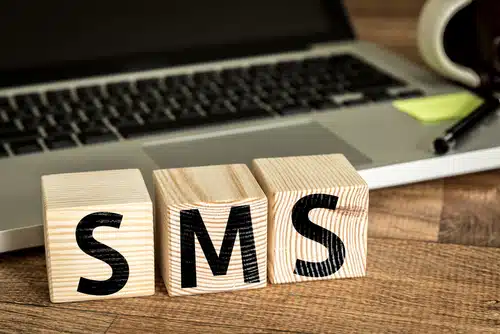
Has your business leaped into SMS marketing (also known as text marketing)? If so, it’s an exciting step!
Now loyal customers and subscribers can communicate with your brand from the convenience of their phones.
However, if you’re not careful, SMS marketing campaigns can be pretty costly. That is why it’s critical to track specific text marketing metrics.
Failing to track vital SMS marketing metrics and data points can leave business owners unaware of:
- How much money they’re spending on text marketing campaigns
- How engaged or interested audiences are in your products, services, and brand
- What customers want and need from your business
Avoid text failures, revenue loss, and upset subscribers by tracking the following SMS marketing metrics.
Delivery Rate
The delivery rate measures the percentage of texts successfully sent to your audience.
To calculate this, use the following formula:
(Delivered texts / Total texts sent) * 100
What’s the point of investing in text marketing if your messages fail to send properly? Tracking the delivery rate helps you understand how many subscribers are successfully receiving your message.
Delivery errors can include inaccurate phone numbers, carrier service outages, and blocked phone numbers. If left unchecked, delivery errors can be expensive!
Naturally, you want a high delivery rate as close to 100% as possible.
Engagement Rate
The engagement rate showcases how active your subscribers are. Are they clicking on the links? Are you forwarding your texts to friends? Your engagement rate will tell you!
To calculate engagement rate, use this formula:
(Total Interactions / Total Messages) * 100
A low engagement rate can indicate campaign problems such as:
- Irrelevant message copy, media, or campaign goals
- Improper audience targeting
- Your target audience doesn’t prefer to receive texts
Work to improve your engagement rates by paying attention to what your subscribers respond best to. Do they want short, sweet, and to-the-point messages? Would they instead receive exclusive discounts over the latest blog content? Keep an eye on what’s working and what’s not, along with an accurate engagement rate, to make strategic text marketing decisions.
Unsubscribe Rate
As the title describes, the unsubscribe rate demonstrates the percentage of subscribers who opted out of text marketing messages from your brand.
While you never want people to unsubscribe, it’s bound to happen. You can calculate this metric by using the following formula:
(# of opt-outs / # of subscribers at the beginning of a campaign) * 100
If you choose an SMS marketing strategy filled with untargeted text blasts and sales-focused copy, you’ll likely experience a high unsubscribe rate. Always think about who you’re texting, what you plan to send to them, and why.
Conversion Rate
The conversion rate tracks the percentage of subscribers who completed the desired action, such as clicking on a link or starting a conversation.
This metric can get tracked by using this calculation:
(# of conversions / # of messages sent) * 100
Ultimately, this is the most vital SMS marketing metric to track. After all, if you’re not trying to get subscribers to make a purchase, click a link, or start a conversation, why are you investing in text marketing platforms?
As you craft each text campaign, review the conversion rates—as well as engagement and unsubscribe rates—of previous campaigns. Think about what you can do differently this time to improve this metric!
Studies have shown that text marketing campaigns experience a 30-35% conversion rate on average.
Return On Investment (ROI)
Return on investment (ROI) tracks how much return your text marketing campaign generated compared to the initial investment.
To calculate ROI, use this formula:
(Total sales generated from text campaigns – total $ spent on text marketing) / total $ spent on marketing
Using this calculation, you can determine if you’re generating a return or operating at a loss. If you find yourself losing money on text marketing, think about what tactics you can use to increase subscribers or optimize conversions from your campaigns.
Customer Acquisition Cost (CAC)
The customer acquisition cost metric tracks how much it costs to attain each new customer through your text marketing efforts.
Ideally, this number is on the low end, helping to maximize your return on investment.
Customer acquisition cost gets calculated by dividing the campaign expenses by the number of new customers.
Understanding how much it costs to acquire each customer will help you make strategic decisions related to your overall SMS marketing campaign.
Opt-In Source
Not all SMS marketing metrics are quantitative!
Tracking the opt-in source of each new subscriber helps businesses understand which marketing efforts perform best in convincing customers or website visitors to subscribe to text marketing messages from your business.
Common opt-in sources include:
- Email newsletters
- Company websites
- Point-of-sale systems
- Social media posts
Keep an eye on which avenue works best for gaining new subscribers. Then, dedicate a portion of your budget to these channels.
If you’re implementing an SMS marketing strategy for your business, make sure these metrics are part of your reports!












